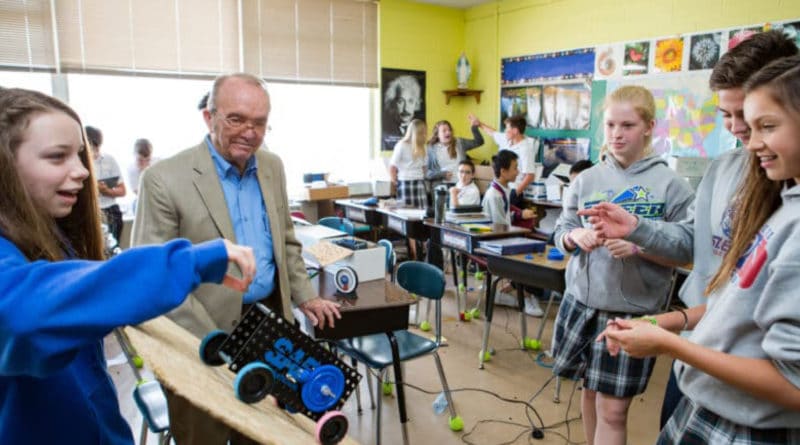You Don’t Need a Background in Science, Technology, Engineering and Math (STEM) to Help Your Students Succeed
This is a guest post submitted by the SAE Foundation.
As educators, we strive to provide our students the resources they need to confidently
navigate the real world. I’ve seen that world transform every day over 22 years of
teaching. It’s become clear that success in tomorrow’s society requires a strong
foundation in STEM concepts—but how do we know where to start?
A student’s parent answered that for me last year. Amy Brewer Smith, M.Ed., SAE
International’s Manager of Pre-College Programs, introduced me to what the SAE
Foundation makes possible through the A World In Motion ® (AWIM) program.
A research-proven, teacher-administered program for students from Pre-K through 8th
grade, AWIM provides a range of turnkey challenges benchmarked to national standards.
AWIM builds its curriculum around the “Engineering Design Experience,” which allows
students to work in teams to solve a “challenge.”
One of the numerous benefits of AWIM is the ability to engage and inspire students at
early ages to pursue STEM subjects and careers—even if you don’t have a STEM
background yourself.
As I started with Pinball Designers, a challenge where students build, test and modify a
non-electronic pinball machine to create a toy that meets certain specifications, the
Teacher’s Manual refreshed my knowledge to help me bring science to the forefront. Amy
worked with me as an industry volunteer in the classroom and offered feedback
throughout the process. When I kicked off Rolling Things, a challenge where students
explore how changing ramp height and vehicle weight affect the momentum of toy cars, I
partnered side by side with another grade-level educator. In addition to the manual, in-
person and virtual training support, I had opportunities for more professional development
sessions online to make sure I had the information to guide my students.
AWIM challenges come with all the resources and materials your students will need and
are flexible enough to fit into your established scope and sequence. I condensed learning
the concepts of gravity, potential and kinetic energy and inclined planes in Pinball
Designers to three or four times a week. Rolling Things took place twice a week, teaching
concepts of momentum, mass, velocity and more to give our physical science pushes
and pulls extra oomph.
Students often ask to play with the kits during recess to experiment, make mistakes, and
try again. This hands-on learning is incredibly valuable. After collaborating with their
peers on these challenges, my students are more willing to listen to each other and
demonstrate improved critical thinking, problem solving, confidence and resiliency. The
confidence and leadership my students exuded lasted way beyond the challenge was
over as well. I could remind my students about the successes and leadership they
experienced during the challenge, which helped them in successive activities and
struggles.
If you’re ready to help your students develop the skills they’ll need for real-world success,
I strongly recommend SAE’s A World In Motion program. Thanks to generous donors and
corporations, the support is there for you. The two challenges I led were well thought out,
well scaffolded, and very realistic in terms of what students can learn and achieve.
Visit the AWIM website and reach out to your curriculum director to start igniting STEM
curiosity in your classroom.
A 22-year veteran of education, Amber Graves introduced the A World In Motion ®
program into her first-grade classroom in Fall 2018.

